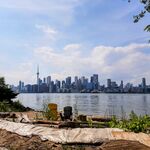buildup
Senior Member
I'm confident downtown Toronto is on an established path to greatness. But I've come to see city centres such as Mississauga Town Centre (or whatever its called) as complimentry rather than depleting or competing with the core. Not every employer needs or wants to be at King & Bay. Furthermore its not ideal to have everyone in suburbia commuting everyday. So I would love to see the suburbs buiding dense vibrant commercial nodes.
Can anyone list where the major suburban commercial nodes are precisely - and how you see their potential?
Im aware there Mississauga and North York have ambitions.
Can anyone list where the major suburban commercial nodes are precisely - and how you see their potential?
Im aware there Mississauga and North York have ambitions.




